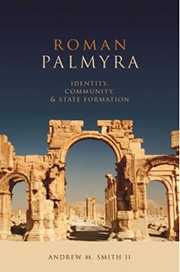In social, economic, and cultural terms, the eastern frontier of the Roman Empire was vastly complex, which has fueled considerable debate among scholars concerning the nature of the interactions between Romans and natives in the Near East. Notions of imperialism, specifically "cultural" imperialism, frame much of the debate. Through a detailed analysis of Palmyrene identity and community formation, Andrew M. Smith II presents a social and political history of Roman Palmyra, the oasis city situated deep in the Syrian Desert midway between Damascus and the Euphrates river.
This city-state is unique in the ancient world, since it began as a humble community, probably no more than an isolated village, and grew--due in part to its role in the caravan trade--into an economically powerful, cosmopolitan urban center of Graeco-Roman character that operated outside of Roman rule, yet under Roman patronage. The book therefore focuses on two aspects of Palmyrene civilization during the first three centuries of the Common Era: the emergence and subsequent development of Palmyra as a commercial and political center in the desert frontier between Rome and Parthia (and later Persia), and the "making" of Palmyrenes.
This study is thus concerned with the creation, structure, and maintenance of Palmyrene identity and that of Palmyra as an urban community in a volatile frontier zone. The history of Palmyra's communal development would be wholly obscure were it not for the archaeological and epigraphic materials that testify to Palmyrene achievements and prosperity at home and abroad. These, complemented by the literary evidence, also provide insight into the relatively obscure historical process of sedentarization and of the relationships between pastoral and sedentary communities in the Roman Near East. In addition to examining Palmyra as a frontier community, the book will move beyond Syria to explore the development and maintenance of Palmyrene identity in diaspora settings in Italy, north Africa, and Europe. This study is thus concerned with the creation, structure, and maintenance of Palmyrene identity and that of Palmyra as an urban community in a volatile frontier zone.
Read More on Oxford University Press


